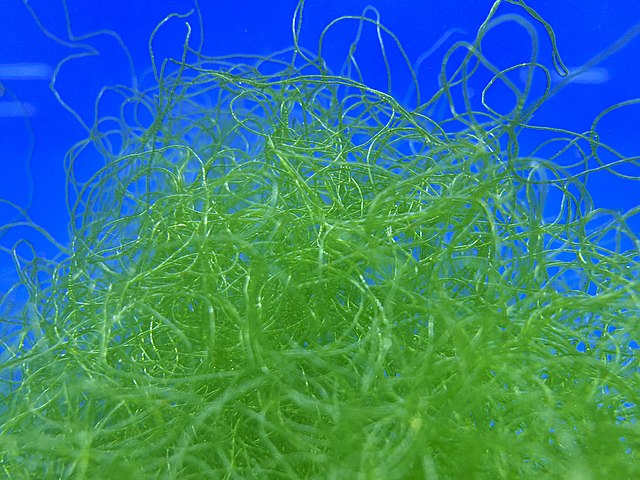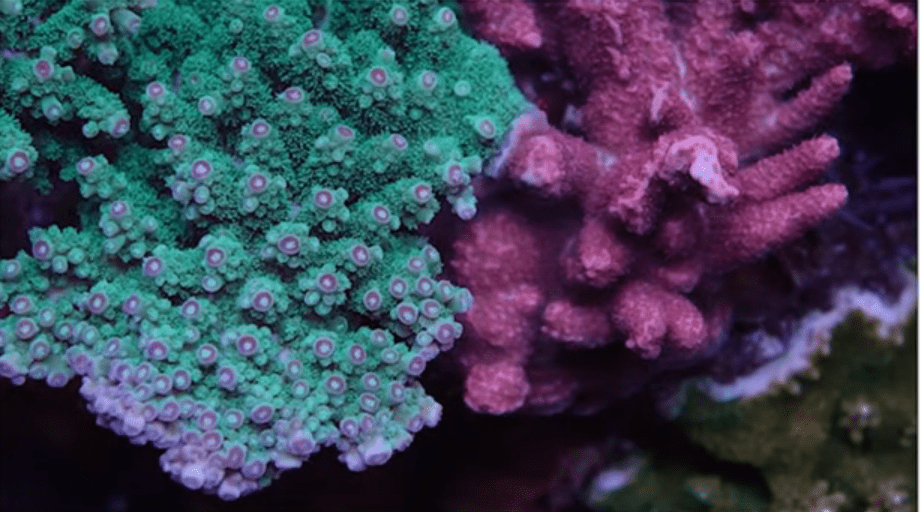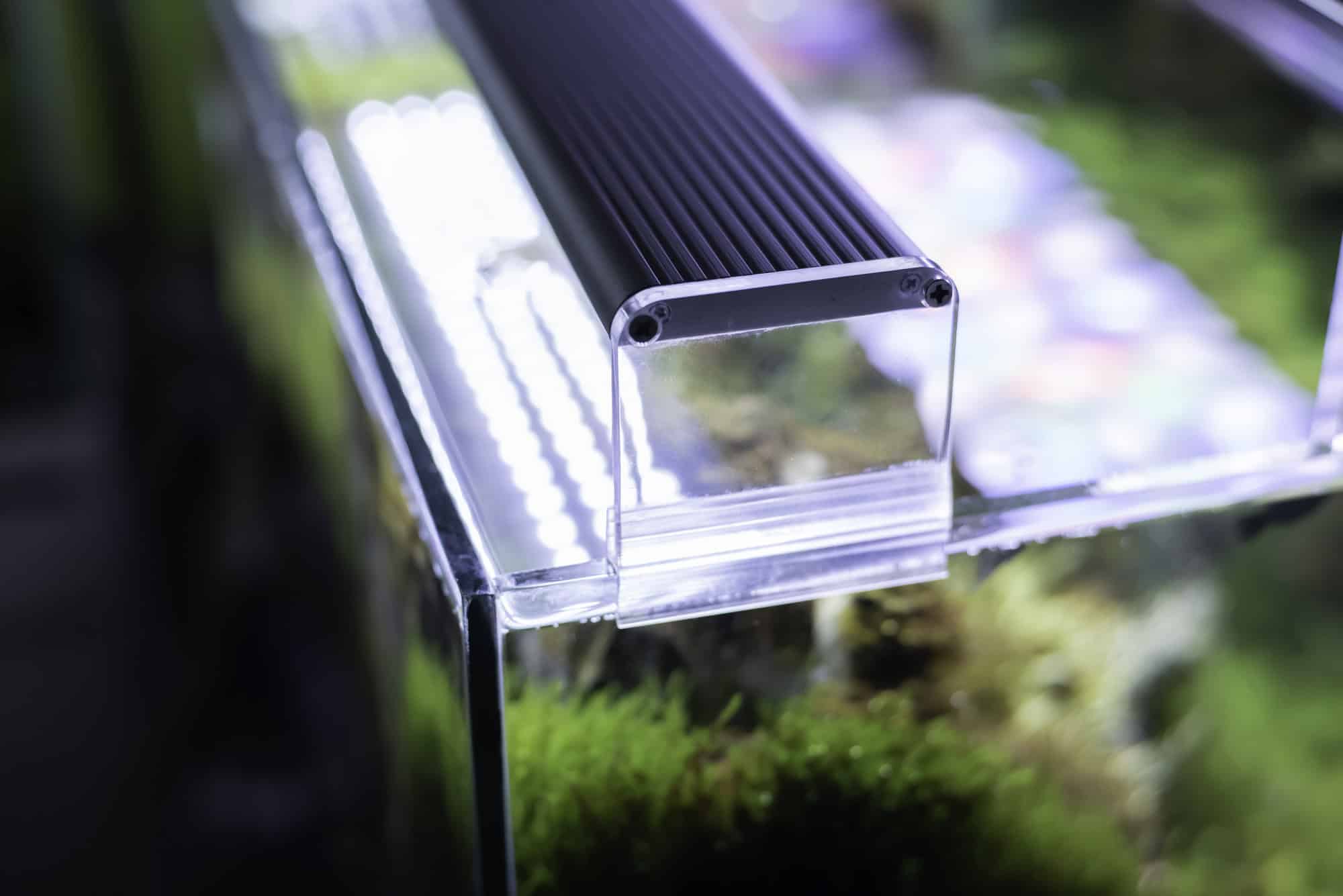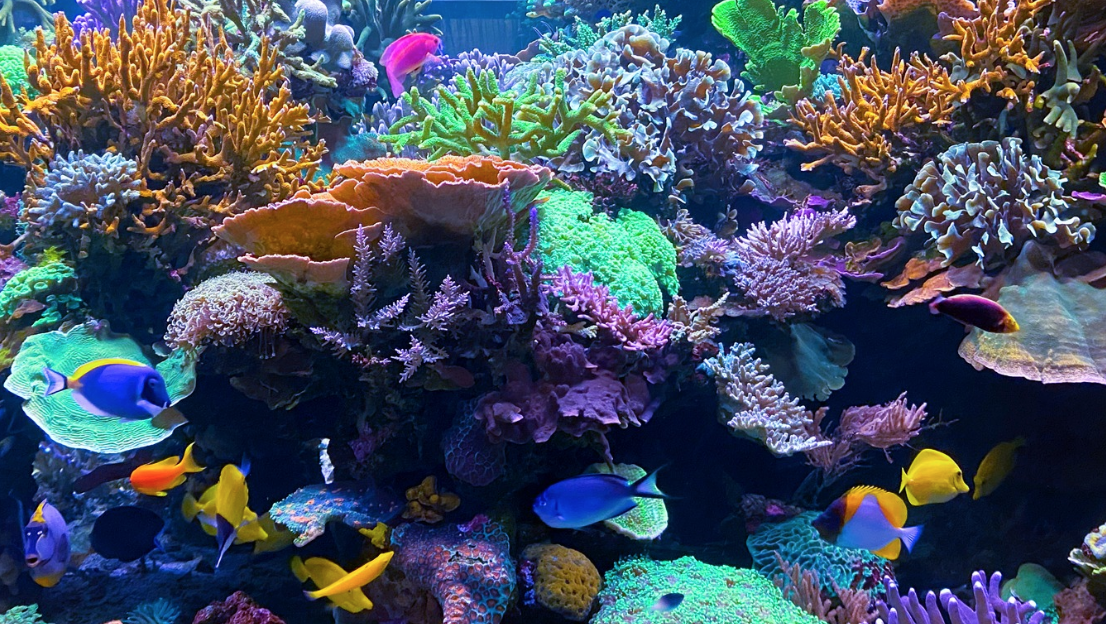Now for some basic differences:
The first and maybe most important difference is that chaeto reactors grow only in saltwater (fish only, fish with live rock, or reef) whereas algae scrubbers grow (filter) in both saltwater and freshwater. Growing = filtering. But even if you are exclusively freshwater, understanding the differences between reactors and scrubbers will help you optimize a system for your tank. There have not been any experiments of chaeto in brackish water.
A second difference is size; a chaeto reactor needs to be much larger than an algae scrubber. Many saltwater tanks have large sumps, and even dedicated fish rooms, so this may not be an issue. Through experiential results of individual aquarists running chaeto reactors over ten years, and through many thousands of aquarists running algae scrubbers since 2008, it has been observed that a chaeto reactor needs to be 4 to 8 times the size of an algae scrubber to provide the same rate of filtering capacity (rate of nutrient removal).
A third difference is seeding; a chaeto reactor needs to be seeded with a small amount of chaeto, either from another aquarium, reactor, or from your last harvest (i.e., you don’t harvest all of it), whereas an algae scrubber will self-seed from invisible algal cells in the water. When self-seeding, algae scrubbers usually start out with a slime type of growth, and in saltwater this often progresses on to a green hair algae growth, depending on the nutrients in the water.
A fourth difference is in how you clean (harvest). For a chaeto reactor, you usually disassemble the reactor by unscrewing several screws on the top of the container, and then pulling a tube or frame up from the container; the chaeto growth is removed from the frame, the clean frame is placed back into the container, and the lid and screws are put back into place. Since chaeto does not attach to a surface, you often get broken chaeto pieces that flow into your tank or sump when you harvest; a filter screen in the reactor can reduce this.
For an algae scrubber, cleaning (harvesting) depends on the design; freshwater versions will usually be taken to a sink for cleaning because of the thin and slimy growth (saltwater versions can also be cleaned in a sink, but are sometimes harvested in-place). A horizontal river design will have a light that you lift up off of the container and a screen that you remove from the container. A waterfall design will have a screen that you remove from a pipe; sometimes the whole pipe is removed, and sometimes the pipe is in a container that you need to open first. A bubble upflow design has at least part of the container under water, which you either reach into to grab the growth, or you lift the container out of the water and clean in a bucket or sink. And for all algae scrubbers, since the growth is attached to a surface, broken floating algae pieces are not common when you harvest on a proper schedule. Bubble upflow scrubbers almost never detach because the growth is supported by the water, whereas waterfalls are pulled down by gravity.
A fifth difference is fish feeding; by feeding your fish from the growth, the fish eat naturally and you don’t have to buy and add packaged food to the water (which creates nutrients). Very few if any aquarium animals eat chaeto, so the only option is to remove the chaeto and either throw it away or give it to a friend. For algae scrubbers, it depends on the growth: Slime growth, although full of absorbed nutrients from the water, is usually not eaten by aquarium fish and thus is scraped off and thrown away or used as garden fertilizer. Green hair algae however is eaten by almost all herbivore fish and many snails (it’s their food in nature), and thus some of the growth can be fed back to the fish, especially in freshwater where algae scrubbers almost always grow this type of growth. More fish feeding info here: http://algaescrubber.net/forums/show…h-to-your-fish
A sixth difference is overgrowth of algae on the lights. Chaeto reactors usually have a large surface area light (such as a long coiled light strip), and the illumination from these is not enough to “burn” off algae growth on the surface of the clear wall (this growth reduces illumination output). You will need to clean these clear surfaces in order to keep the illumination at full output. Most algae scrubbers use discrete (separate) high power LEDs which produce enough illumination in a small space to burn off algal growth on clear surfaces; for these you do not need to wipe the growth off because it does not grow there.
The final difference is overgrowth of algae on the algae itself. Chaeto is a slow growing species of algae because of its thick cellular structure, and if conditions favor faster growing algae (like slime) you will get slime or green hair algae which attaches on top of the chaeto, causing the chaeto to be blocked from light and flow, and eventually causing the chaeto to die and rot (“crash”). There is no easy way to wipe slime or green hair algae off of chaeto; the chaeto must just be harvested earlier instead. For algae scrubbers, green hair algal growth on top of more green hair growth is how scrubbers operate in the first place, so earlier harvesting is not needed.




